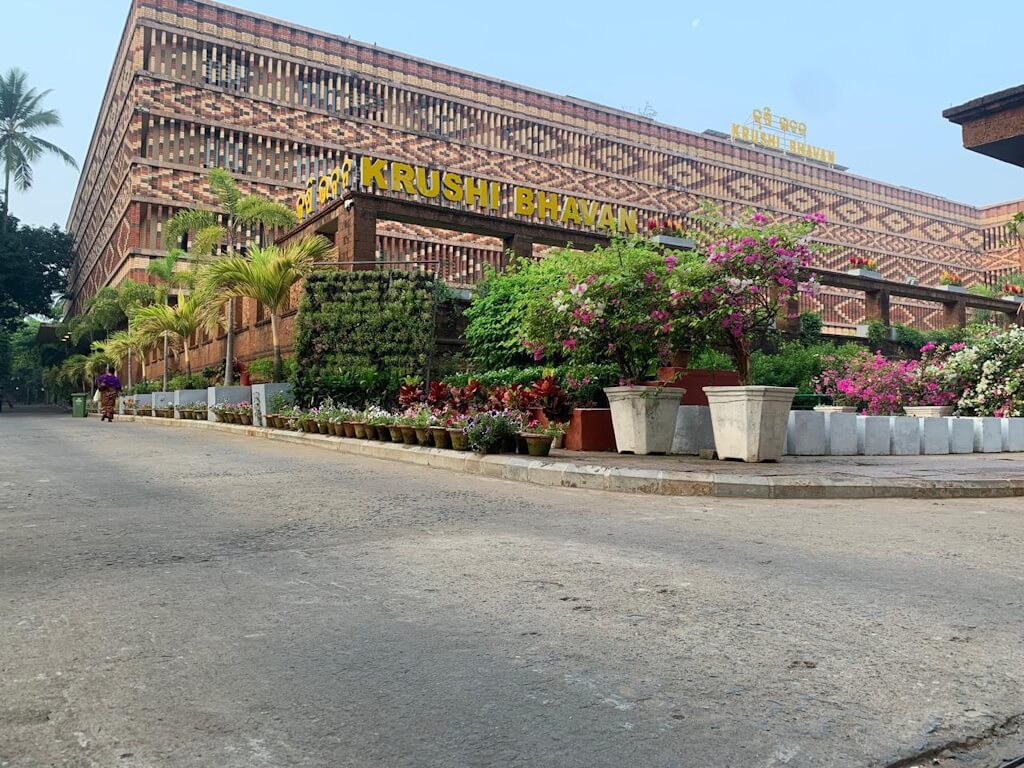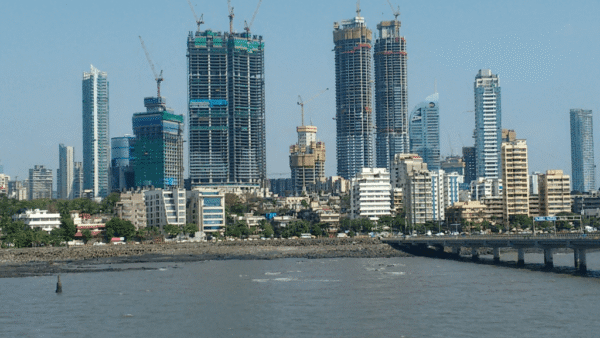Imagine it is 32 degrees Celsius outdoors but you are living in a house without air conditioners. The indoor temperature is a pleasant 29 degrees Celsius. The house is suffused with daylight but the heat has been kept out because of the solar shading. It has reduced or eliminated the need for artificial cooling. Imagine that this home, though large and housing a handful of family members, generates next to no waste because it is composted and recycled, and rationalises the use of water in various ways. And every house or apartment in the building is this way.
In a nutshell, this is a green home in a sustainable or green building. A green building, by definition, prioritises the responsible use of materials and energy during and after construction; it uses energy and water efficiently, generates minimal waste, and ensures human comfort and well-being too. In the era of climate change, or more accurately climate-related challenges traced to fossil fuel use and emissions, going green has acquired an urgency. And nowhere is it more pertinent than in the construction sector which is a major contributor to emissions.[1]
Over the past two decades, the certification of buildings as sustainable or ‘green buildings’ has grown. India ranks third in the US Green Building Council’s (USGBC) LEED certification list behind China and Canada, states a report this month. “In 2023, 248 projects, across both buildings and spaces, were certified for LEED covering 7.23 million gross square metres (GSM). China topped the rankings with over 24 million GSM-certified buildings followed by Canada with 7.9 million,” it said.[2]
The report is a much-needed boost to the green building movement in India. It can make a difference in the climate adaptation and mitigation strategies. As cities expand with more development and redevelopment – in other words, construction – it has become important to build right. Buildings are responsible for 39 percent of global energy-related carbon emissions — 28 percent from energy needed to heat, cool and power them and the remaining 11 percent from materials and construction.[3]
With India’s urban population projected to be about 40 percent, at around 630 million,[4] the demand for built spaces is slated to rise. Hence, there is a growing need to embrace the green building concept to build in a more sustainable manner and make buildings energy-water efficient. When the green building movement first introduced sustainable materials and methods in the early 2000s, the concept was relatively unknown. It is better known now, going by the rise in certifications sought[5] but it is yet to become the default way of construction, or the norm.
The Indian Green Building Council (IGBC), an industry-led certification or rating body, aligns green buildings to the country’s ancient concept of Pancha Bhutas or five elements of nature — site management with prithvi, water conservation with jal, energy efficiency with agni, air quality with vayu, and daylight with akash.[6] Green buildings are ideally built with locally sourced materials that are ecologically sound and financially more viable than materials transported over long distances.
The question is: What will it take for green buildings to become the default, or at least more popular, in India’s cities?
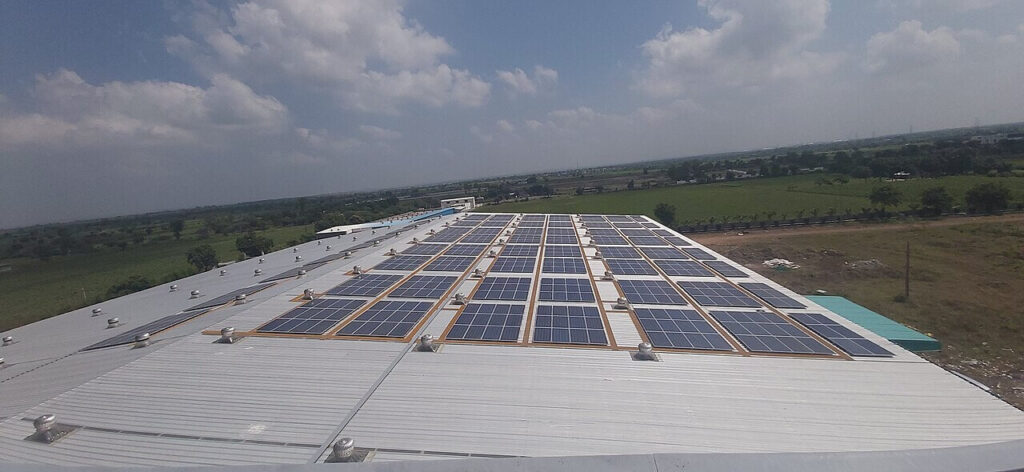
Photo: Wikimedia Commons
Going green means benefits
Several state governments offer tax rebates and incentives for certified buildings and the accreditation adds value to these buildings. Maharashtra and Tamil Nadu provide property tax rebates ranging from 5 percent to 10 percent for buildings with certifications such as Leadership in Energy and Environmental Design (LEED) or Green Rating for Integrated Habitat Assessment (GRIHA)[7], the US certification and India’s second certification respectively, as incentive. Except Mumbai city-suburbs, the rest of the Mumbai Metropolitan Region and Pune get 15 percent and 10 percent additional Floor Space Index, or buildable area, respectively from the government.[8]
With banks and financial institutions too offering lower rate finance for green buildings, developers are slowly cashing in. India’s National Building Code also has detailed provisions on green buildings but these are still recommendatory. The guidelines of the IGBC and GRIHA as well as the National Building Code have to be distilled into city-level building bye-laws to have an impact. Even then, the stakeholders are many – from civic officials and the political class to architects, engineers, contractors, and eventually the buyers or users – and they all have to be invested in the concept.
By 2030, all new buildings constructed in India must be certified for their green attributes and, by 2047, all existing buildings should be, says Gurmit Singh Arora, the former national chairperson of the CII’s IGBC. Getting additional FSI can be an attraction. “If I can get a 10 percent to 12 percent extra FSI, then it makes sense to go IGBC-green. One also gets preferential treatment from the Ministry of Environment, Forests and Climate Change. So, it now makes business sense to go green,” he says.
His stewardship at the IGBC saw certified green buildings’ area go from 1 billion to 10 billion square feet. Many developers seek a pre-certification but do not go for the certification itself, says Arora. “We pre-certify based on design and intent. After the building is built, we inspect it and make sure that whatever the intent was is installed.”
Those in the green ratings domain believe that the market itself – or market demand – will eventually push real estate developers and builders towards going green but that is not a surprise given that most organisations like the IGBC have been led by industry bodies like the CII. While market-led growth would be welcome, government incentives and mandates might help more.
“The market is more sensitive to cost impacts and the interplay between finance, availability of finance for effective implementation,” says Priyanka Kochhar, founder and CEO of The Habitat Emprise, a consultancy promoting sustainable habitats. She thinks this can be strengthened further, especially for people who have self-built homes as “they do not have access to either information or lines of credit that can facilitate their journey”.
The municipal corporations of Ahmedabad, Surat, Vadodara, and Rajkot in Gujarat have played a role in spreading awareness of green buildings in their areas, says Ankoor Sanghvi, LEED-accredited professional based in the state. “There is increasing demand in Ahmedabad. There was a mandate that Pradhan Mantri Awas Yojana projects should go in for green certification. We have had people from smaller centres like Porbandar who are asking us to conduct a knowledge session with them.”
However, green buildings are like islands. As Sanghvi points out, “We have a lot of individual buildings but not a whole area of green buildings or large green zones which should have been after 15 years of green building movement in India.”
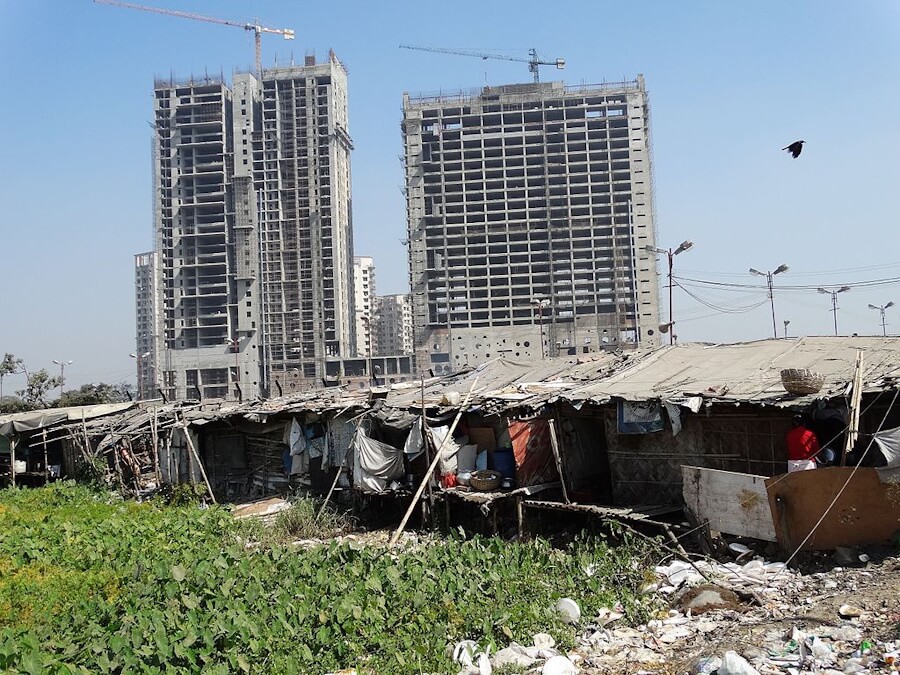
Photo: Wikimedia Commons
The hurdles
The challenges in implementation at the policy level and the lack of awareness or seriousness at the grassroots level is what Shabnam Bassi, director of the sustainable buildings division at The Energy and Resources Institute (TERI) and deputy CEO-cum-secretary and treasurer at GRIHA, points to. “The incentive model used by various states to promote green buildings is primarily through provision of additional Floor Area Ratio; mandate to construct green buildings is limited to a very few state policies. It is left to the end users and their willingness to take green building ratings. Green building construction and rating for validation must be made mandatory by state governments,” she says.
The biggest challenges, Bassi points out, are the lack of skilled manpower and information on green buildings. “The rate at which construction is happening, the kind of support or infrastructure needed to take up the certification is not there. Most contractors do understand the seriousness of the subject; it’s just another box to tick. This happens due to lack of awareness about the serious impacts of climate change and the mitigating ability of green buildings,” adds Bassi.
According to urban planner and architect Urmi Buragohain India’s building regulations, including the National Building Code and municipal bye-laws, are predominantly prescriptive leaving limited room for flexibility or innovation. “Some newer regulations focus on specific outcomes such as energy efficiency, fire safety, or structural resilience, but without mandating how to achieve them,” she says.
The research paper Obstacles and Catalysts Associated with Implementation of LEED-EB® in India,[9] in 2013, had highlighted the lack of technology, lack of awareness among stakeholders, high renovation costs associated with the existing buildings and lack of skilled professionals as the main obstacles. Arguing that the standards created for the US could not be applied in India, the researchers found that reduced operating costs and an increased prestige of the project were key factors that motivated the greening of existing buildings.
However, domain experts believe that even if these factors were addressed, the onus of implementation would still rest with local bodies and their building bye-laws. Change has to happen there.
Role of local bye-laws
The importance of an effective framework to strengthen the green building movement was elaborated with reference to Guwahati in an essay by Barasha Das and Harish Borah in Question of Cities. States are required to have frameworks to suit regional conditions and enforce them through the building bye-laws.
“The local bye-laws definitely have a critical role as buildings and infrastructure follow these. If the bye-laws are not updated for sustainability, then implementation will not happen,” says Bassi. The Central Public Works Department (CPWD) has drafted model bye-laws. States have to reflect them in their urban local bodies. Bassi cites Karnataka and Haryana as examples of this but projects are “driven by the private sector” and most of them just fulfil the basic tick box requirements.
“Changes in the bye-laws are coming,” says Arora, “To get an Occupation Certificate, it is now mandatory to install rainwater harvesting, sewer treatment plants, among other things. People will prefer green certification.” Kochhar says that many building bye-laws have already been revised: “Eight to 12 municipalities have incorporated new features. There is a need to look at local materials and their integration. One municipality can learn a lot from another.”
The cost myth
A few years ago, the cost of constructing green buildings was a deterrent because it was higher than a regular one, as one of the pioneers of green buildings, Dr Hariharan Chandrashekar points out in this interview. However, stakeholders are gradually coming to terms with the benefits, both immediate for builders and long-term for users. The perception, though, persists and the marketplace belief is that green buildings cost more or certification is cumbersome.
Major projects embracing the green path is the only way to break the myth. Manohar International Airport in Mopa, Goa, bagged the IGBC’s highest rating, Platinum, in 2022, becoming the first airport terminal in the country to get the tag.[10] “It is 64 percent energy-saving and 38 percent water-saving. Can you imagine an airport with 64 percent energy-saving,” asks Arora, adding that authorities planted more than five lakh trees making the area a carbon sink. Mumbai’s Chhatrapati Shivaji Maharaj International Airport was the first IGBC platinum certified airport under the then existing building rating system (O&M).
The cost was a hurdle earlier, explains Arora, “as a lot of products had to be imported. When we first brought waterless urinals, each cost Rs 30,000 but it’s now less than Rs 2,000”. Now, many products such as glass that allows light but not heat are manufactured in India. The IGBC itself has certified more than 10,000 products under its GreenPro tag. Sanghvi echoes that cost is not a major factor anymore. “If you look at the incremental cost, it is less than 1.5 to 2 percent. It’s a very, very small number.”
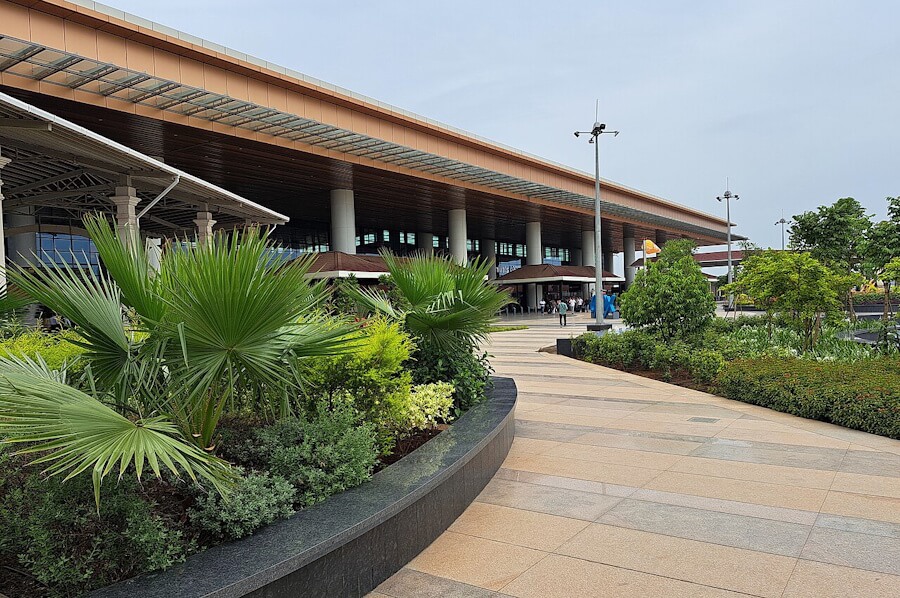
Photo: Wikimedia Commons
Ways forward
The major step has to be better collaboration between the green building rating agencies and urban local bodies to spread awareness and scale up the adoption of the green building framework itself. Urban local bodies must make changes to their bye-laws as needed. Municipal corporations that offer incentives have shown a path but this incentive must be used with caution.
For all stakeholders to understand and opt for green buildings by default, they need information and data about green buildings which are not easily available. Without data, acceptance and progress become difficult. “Information is scattered. There is no central repository, so one does not have access to the work done,” points out Bassi. Similarly, capacities need to be built. State-specific cells or support systems will have to be put in place, she adds.
Buragohain suggests a gradual shift towards a hybrid approach of a combination of prescriptive and performance-based guidelines to suit a country as vast and diverse as India which has distinct regional variations in climate, geography, and urban morphology. “However, widespread implementation would have to overcome challenges like gaps in enforcement, capacity, and awareness,” she says with her two decades of experience in Australia, South Asia, and the Middle East.
Given the scale of construction happening and slated to happen, it is a long road ahead and experts call for greater initiatives from the rating agencies themselves. The onus is now on people who may not completely understand the domain or are not incentivised to adopt green building framework. This is where the need for mandates comes in. If green building practices and certification are made mandatory, like parking spaces in buildings for example, the tide could change.
Shobha Surin, currently based in Bhubaneswar, is a journalist with 20 years of experience in newsrooms in Mumbai. An Associate Editor at Question of Cities, she is concerned about climate change and is learning about sustainable development.
Cover photo: Krushi Bhavan in Bhubaneswar is one of the best examples of sustainable architecture. Credit: Kathrina Ekka

